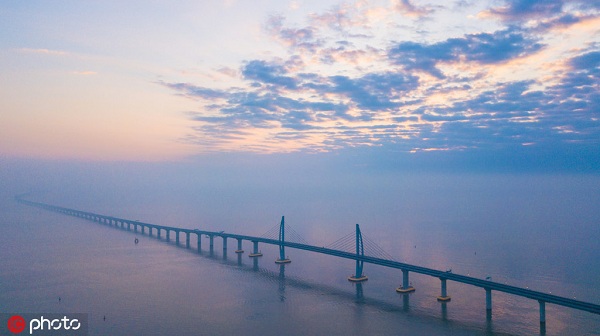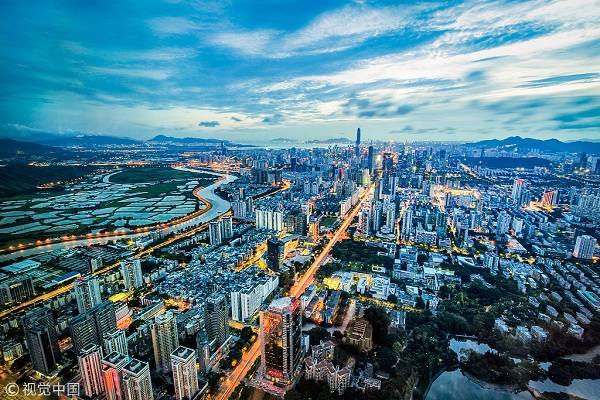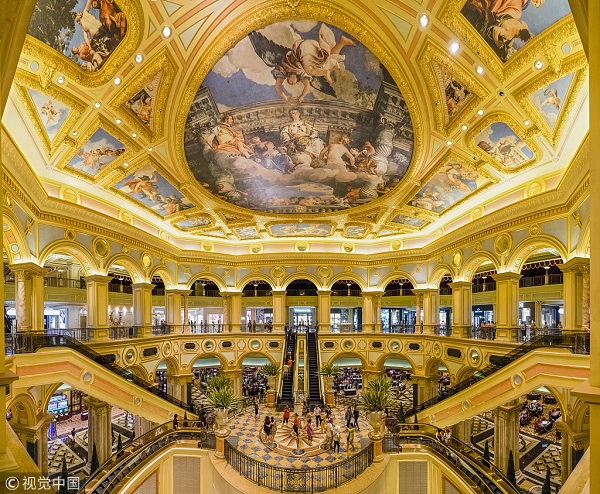Business environment plays a key role for development of Greater Bay Area


The establishment of the Hong Kong-Zhuhai-Macao Bridge symbolizes the strong development potential of the Guangdong-Hong Kong-Macao Greater Bay Area. [Photo/IC]
The Guangdong-Hong Kong-Macao Greater Bay Area strives to create a global competitive business environment, according to the recently released outline development plan for the Greater Bay Area.
In detail, the plan strives to create a stable, fair, transparent, and predictable business environment in the Greater Bay Area through fully leveraging the open and inclusive business platforms in Hong Kong and Macao, establishing a full set of rules and regulations that are adaptable to nine cities in the Pearl River Delta and in line with the ones of international high-profile investment and trade, and playing the decisive role of market in resource allocation.
Min Xiao from Beijing News expressed his opinion regarding the role of the business environment in the Greater Bay Area. According to Min, the importance of optimizing the business environment equals to that of accelerating productivity, which will further improve comprehensive competitiveness. The Greater Bay Area must provide a global competitive business environment when building itself into an international first-class bay area and city cluster; although during this process, it will face both challenges and opportunities.
In terms of opportunities, on the one hand, the Pearl River Delta is a frontier in China which opened economically earliest to the outside world. It is also one of the first regions in the country to introduce and use foreign capital. On the other hand, Hong Kong, as an international financial, shipment, and trade center, which also is an international aviation hub, it boasts a highly open and legalized business environment and a global business network. It is one of the world’s freest economies. Compared with other city clusters, these are the unique advantages for the Greater Bay Area.
However, as different cities involved in the Greater Bay Area have different development stages, plans, goals, and even distinct systems, the question of how to create a universal international-standard business environment in these cities remains a major challenge. For example, Shenzhen is positioned as a globally influential innovation and creativity center, and Macao is building itself into an international tourism and leisure center to promote moderate and diversified economic development. As a result, based on the overall development plan, different measures and policies have to be formulated according to the unique situation and reality of all of the different cities in the Greater Bay Area.

An aerial view of Shenzhen, Guangdong province [Photo/VCG]

Interior of the Venetian Macao casino and hotel in Macau [Photo/VCG]
The Guangdong-Hong Kong-Macao Greater Bay Area is a significant platform that not only drives the coordinated development in the region but also represents the country in global industrial competition. Min believes that the specific indictors of the business environment, including the rule of law, supporting infrastructure, and administrative service efficiency, have to be in line with international standards.
Compared with the New York metropolitan area, San Francisco Bay Area, and Tokyo Bay Area, the Greater Bay Area has its own advantages in economic aggregate, growth potential, and targeted market, while there is still a long way to go in improving its business environment. Once a global competitive business environment is created in the Greater Bay Area, the area will showcase its influence on the world's stage.







